Keeping mother plants: Root Trimming
List of contents
Keeping a genetic reserve of mother plants in an indoor cannabis grow room for a long period of time requires proper care to keep them in good health. Generally, this technique is also used so mother plants produce more quality cuttings.
Cannabis is an annual plant, so if we plan to keep it in growth stage we need to follow certain steps in order to keep it healthy and strong. Some marijuana strains are more demanding than others, but all of them enjoy having a lush root ball; it is then the grower's job to take care of the root system of the plants so they can show their full potential, always under optimal conditions.
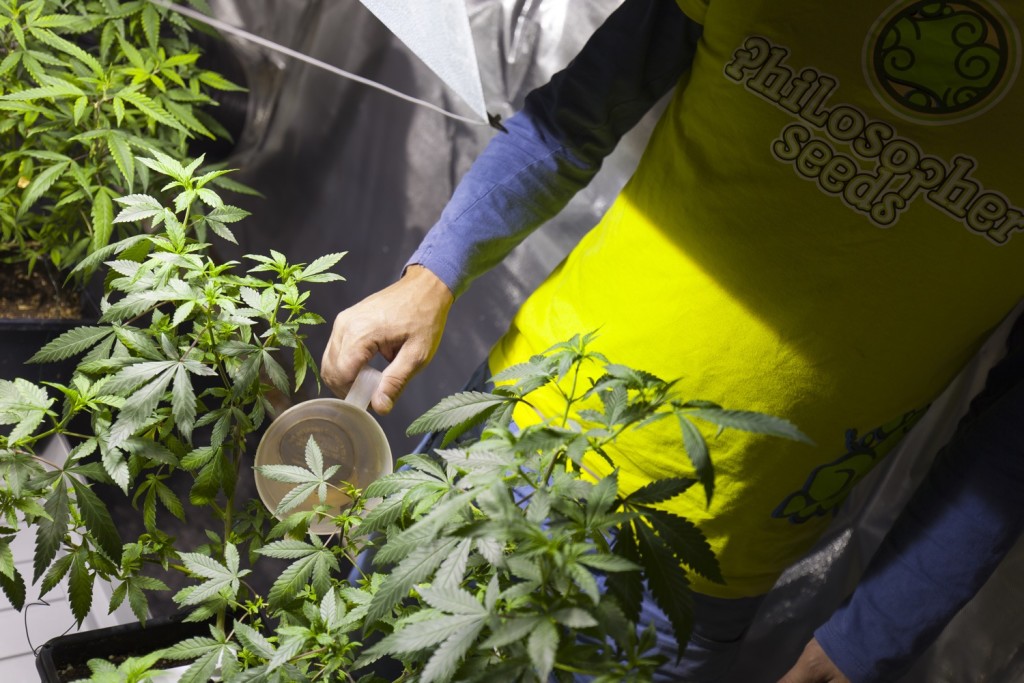
The Philosopher Seeds team presents here one of the different techniques commonly used by our breeders when keeping mother plants: Root Trimming.
When should I trim the roots of my plants?
When a cannabis plant is grown in pots or containers, the available volume of substrate is limited. According to this volume, plants can spend more or less time in a pot before the growth of the root system is limited. As soon as the root ball requires more space, we can observe an acceleration of the phenomenon called lignification in the branches. Thus, the plant is sending a visual signal which indicates that it needs some help to continue growing lush and strong.
If your potted plants have been growing for too much time in the same container, the substrate becomes compacted and a layer of salts - mainly lime - has formed in the surface. This makes it more difficult for the irrigation water to penetrate the substrate, thus creating dry pockets which, in turn, makes it harder for the plant to hydrate. The overall health status of the plant becomes weaker, and so any cutting taken from it.
Not having enough space for the root ball also causes some plants to start flowering even under a growth photoperiod (18 hours of light / 6 hours of darkness). Easy Haze / K13 Haze and Early Maroc are examples of plants sensitive to this factors.
How to trim mother plants?
The root trimming technique has proven to be a very simple and efficient way to keep healthy mother plants. However, there are a few hygienic precautions that we should follow since the root system is one of the most delicate parts of the plant and is exposed to lots of infections. We then recommend sterilizing our tools with alcohol before starting the process.
As precaution, and before starting trimming the roots, we can take a couple of cuttings from the mother plant and wait until at least one of them is rooted.
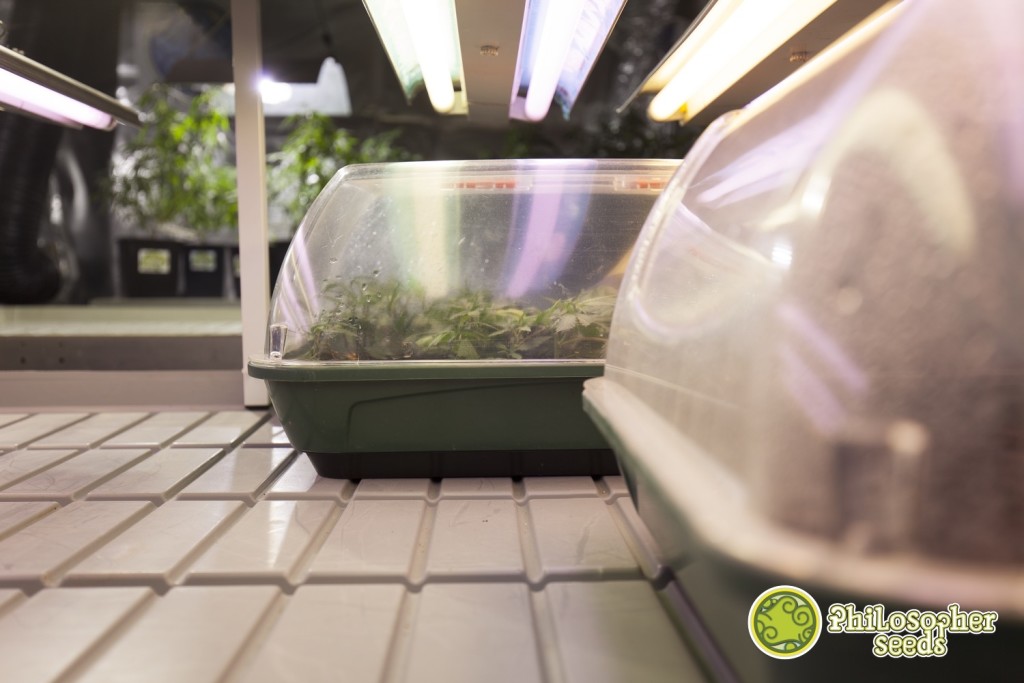
Here we can see one of our our Tropimango mother plants, kept for nearly 6 months under growth photoperiod (18/6) in a 7 litre container, using an organic soil mix for cannabis.
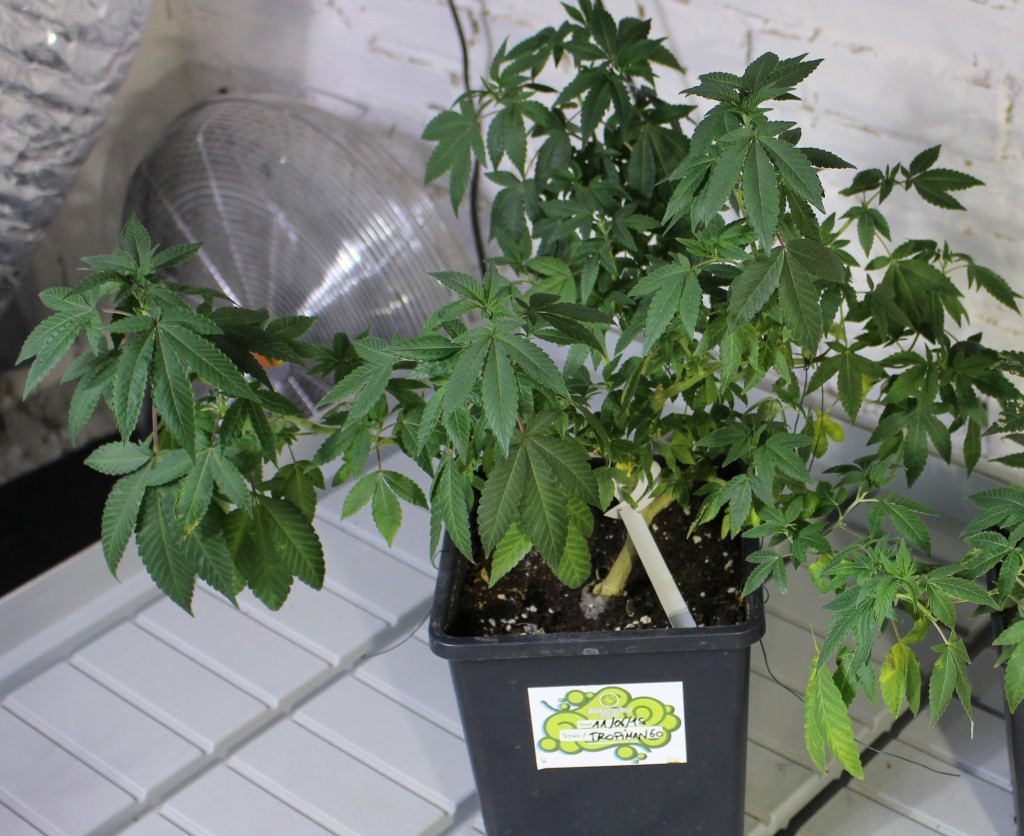
We can see that, while looking healthy, some branches have hardened. It is time then to trim the roots to ensure proper development.
Approximately, we should trim the roots of a mother plant kept in a 3 litre container every 3 months (11 months for a plant kept in a 11 litre container, etc).
However, using enzymes oftenly in our irrigation water enables a more efficient and fast decomposition of the dead roots and thus prolong these timelines.
Root trimming step by step
The first step is drastically reducing the foliar mass of the plant to limit its future needs regarding nutrients and water so it can concentrate its energy to develop new roots.
Prune the plant at approximately 2/3 of their initial height. This allows lower parts of the plant to have more light and so develop new shoots.
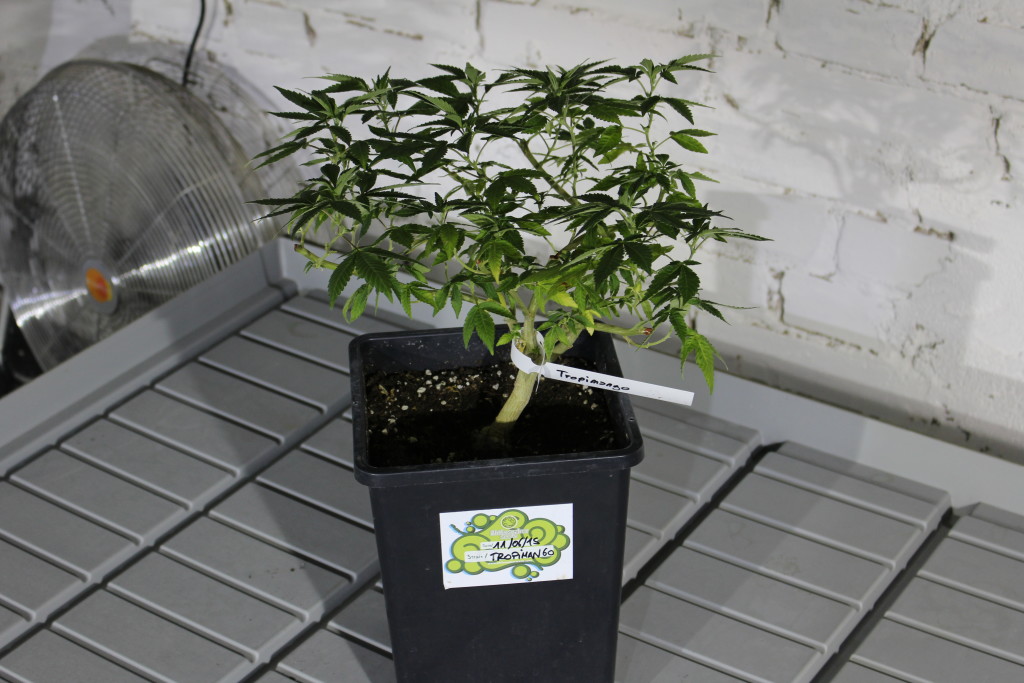
The branches we have cut have often a considerable diameter, so the plant is now sensitive to several infections. Using sterilized tools and some pruning healing product is recommended to avoid fungus and bacteria attacks.
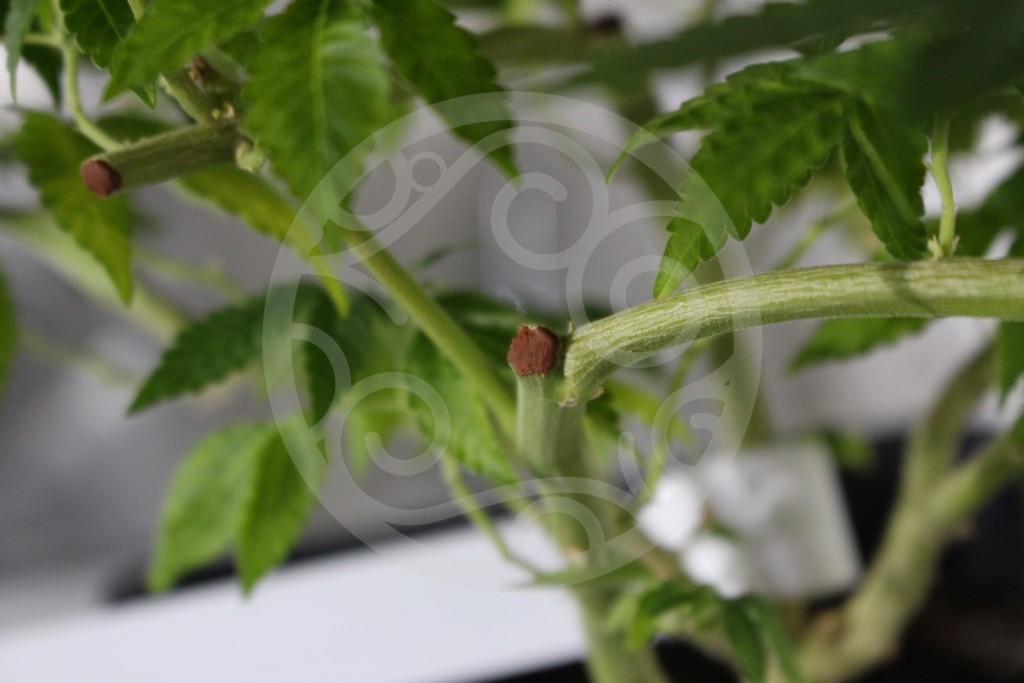
Once pruned, leave the plant to recover for a week. As we see the plant is recovering we can start the root trimming process to sanitize the root system.
After reducing the foliar mass volume, it is now time to reduce the root ball volume and add some new organic soil. This operation should be performed when the soil is not too dry/wet to reduce the stress to plants.
Gently remove the root ball from the pot and put it in horizontal position on the nedge of a table. We'll need a sterilized sharp knife or cutter.
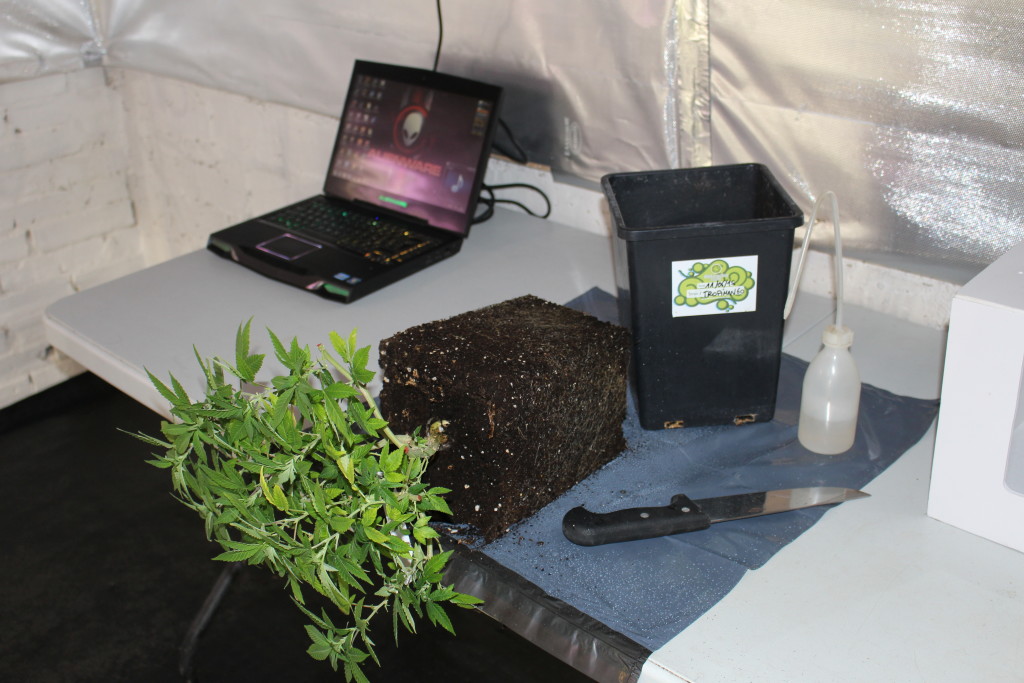
The aim here is to perform a clean cut on the soil. Cut half the heigh and width of the root ball, on each side of the main stem.
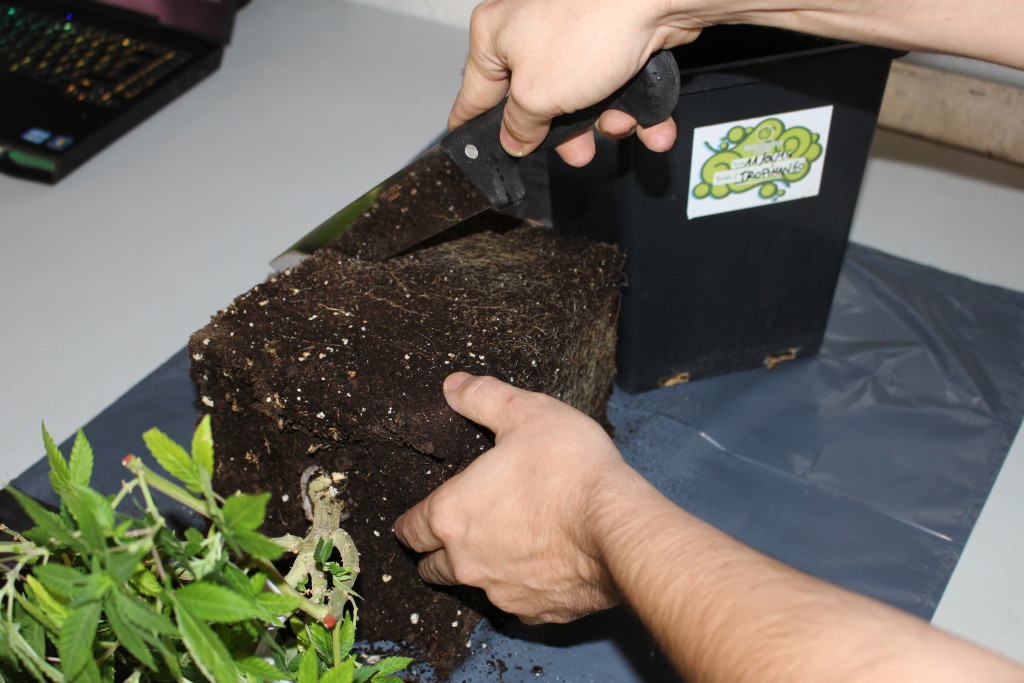
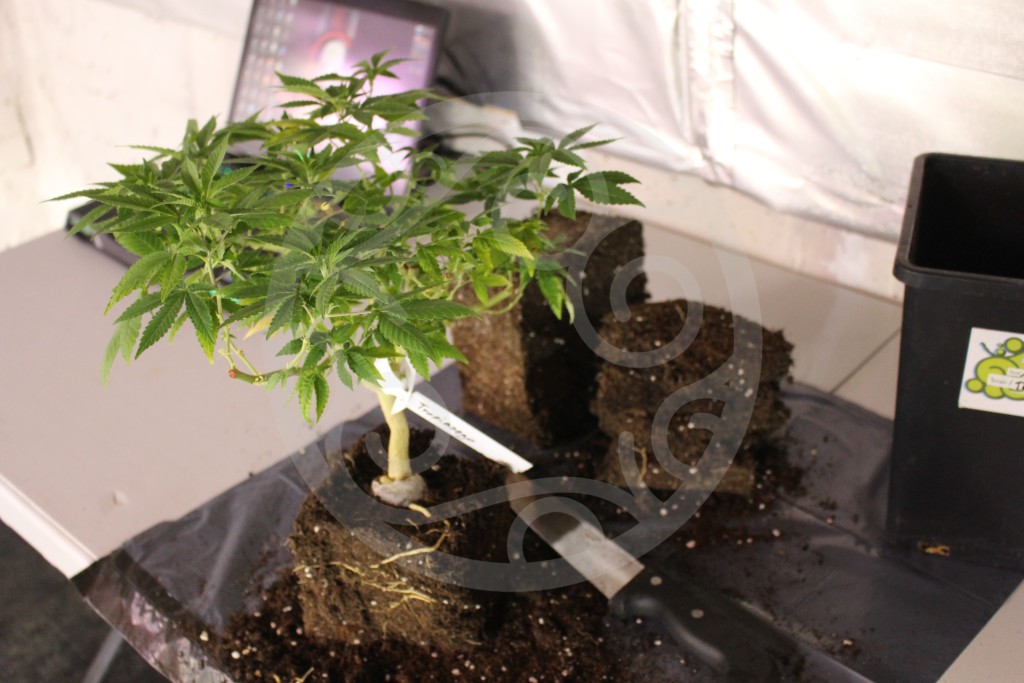
The plant is now ready to be transplanted into the new substrate. If possible, put the plant into a bigger container. Here we transplanted the plant from a 7 litre pot to a 11 litre container with our organic soil mix, composed of light mix, worm castings and a mix of seaweed.
Put a layer of inert substrate such as clay pebbles or puzzolan into the bottom of the pot - about 2-3 cm - to improve drainage.
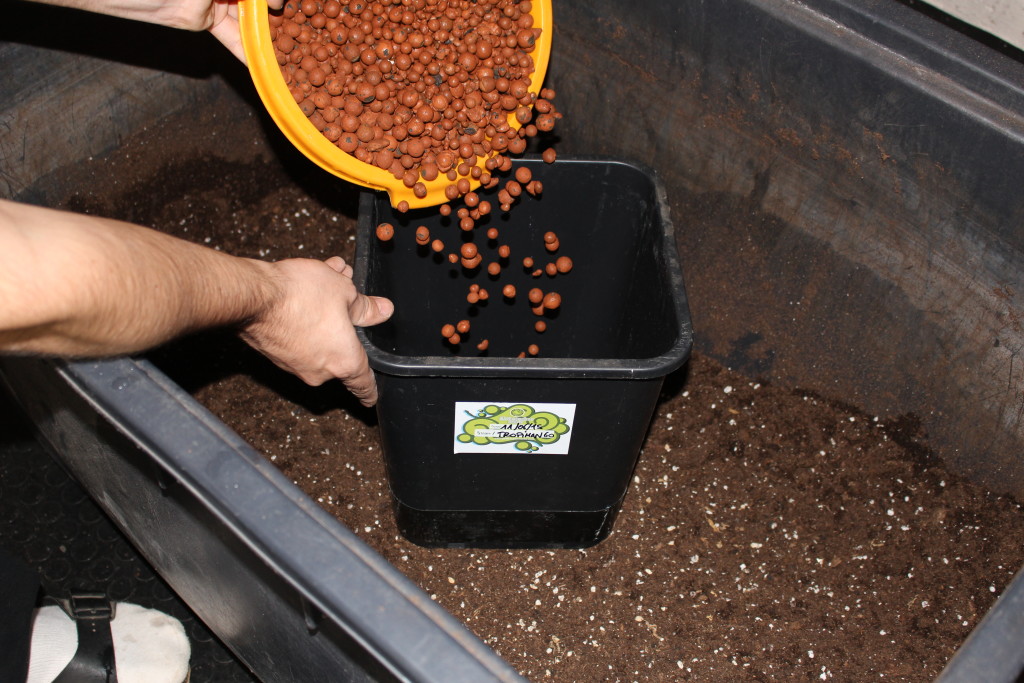
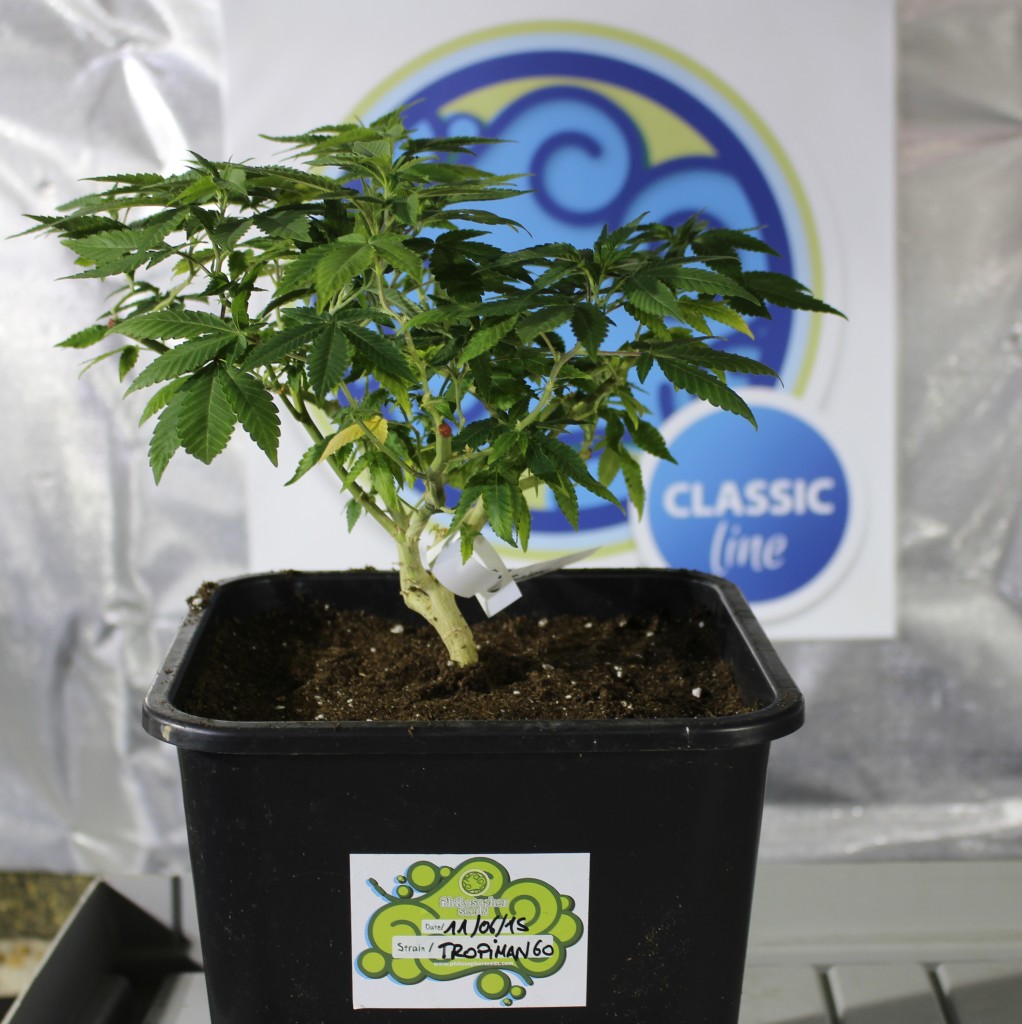
Once the plant is transplanted, water the new substrate using water and some root stimulator. In a few days we'll see the reward of our task: the plant will start growing healthy and lush, developing lots of new shoots and branches.
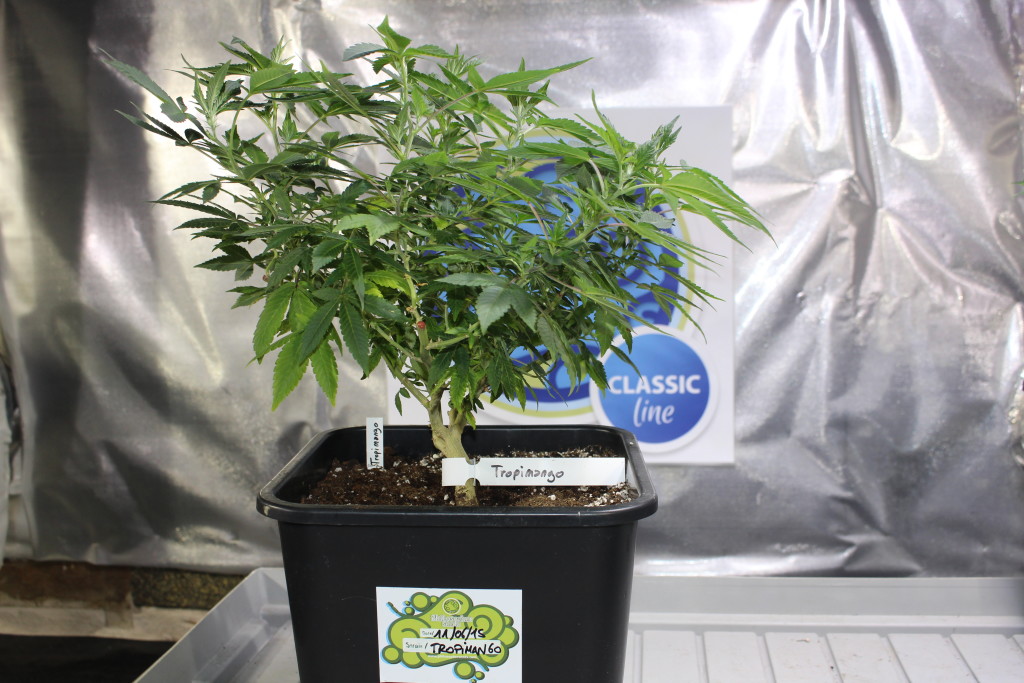
We hope you liked this post and wish you'll have it easier when keeping your mother plants healthy and vigorous.
All our best vibes!







